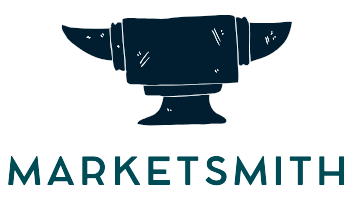Cost-Effective Translation Strategies for Multilingual Business Operations

Do you want your company to seamlessly connect with customers across continents without language being a constant barrier? In today’s globalised world, you can make this a reality with cost-effective translation strategies for multilingual business operations.
As exciting as this sounds, where do you get started? To help you bring your business to the next level, let’s look at the expert knowledge that you need to bridge the language gap. From reaching new markets to fostering stronger customer relationships, the transformative power of translation brings multilingual business success.
Ready to conquer language barriers without breaking the bank? Let’s begin your journey towards global success.
Understanding the Importance of Translation in Multilingual Business
In today’s globalised world, businesses have the potential to reach customers across continents and cultures. As many doors as this opens, this opportunity comes with one crucial challenge: overcoming language barriers. While this is a clear challenge, it is well worth it for countless businesses.
Here’s how translation can be an essential tool for success in multilingual business:
- Expanded Market Reach: By translating your content into multiple languages, you unlock the doors to new markets with vast customer bases. This opens up your website, marketing materials, and product descriptions to a wide demographic.
- Improved Customer Experience: People prefer to interact with businesses in their native language. Accurate and culturally appropriate translations create a positive user experience, which boosts trust and loyalty from your international clientele.
- Boosted Brand Awareness and Credibility: A multilingual presence demonstrates your commitment to global accessibility. This builds brand awareness, positions you as a leader in the international marketplace, and increases your credibility with diverse audiences.
- Improved Communication and Collaboration: Effective translation bridges communication gaps within your multilingual workforce. This fosters better collaboration between teams to create smoother operations and a more efficient work environment.
- Competitive Advantage: In a competitive global market, multilingual capabilities give you a distinct advantage. Companies that prioritise translation stand out to the many customers who appreciate clear communication in their native tongue.
- Legal and Regulatory Compliance: Many countries have legal requirements for product information and marketing materials to be available in the local language. Translation ensures compliance with regulations and avoids potential legal issues and fines.
Investing in high-quality translation services goes beyond simply converting words. It’s about understanding cultural nuances and adapting your message to resonate with different audiences. By effectively bridging the language gap, you open doors to new opportunities, build stronger customer relationships and position your business for success on a global scale.
Assessing Your Translation Needs
In today’s globalised world, businesses have the potential to connect with customers across continents and cultures. Language barriers, however, are a crucial challenge that stands in the way. Translation services play a vital role in bridging these gaps and reaching new audiences. But how do you know if your business truly needs them? Let’s explore the considerations that you should make before investing in translation services for your business.
Understanding Your Target Audience
Before investing in international business expansion, the first step is to identify your target market. Who exactly are you trying to reach? What is their primary language and where do they live? If you plan to expand into new international markets, translation becomes essential to effectively communicate with potential customers. Ultimately, however, deciding to grow domestically vs within the English market vs on a wider global market is a choice that only your business can make and only carefully considering the long-term growth strategy.
Content and Purpose
The type of content you need to have translated also plays a role in the planning process. Websites, marketing materials, product descriptions, and even legal documents all benefit from translation for global audiences. Consider the purpose as well. Are you aiming to inform potential customers about your products, persuade them to make a purchase, or simply entertain them with engaging content? Understanding the purpose helps tailor the translation for maximum impact. Remember that more is not always better so focus on making the most of every touch point and tailoring it to the most important audiences rather than trying to do everything for everyone at the same time.
Budget and Resource Allocation
Translation costs can vary depending on the target language as well as the starting language, turnaround time and complexity of the content. Be realistic about the level of service required and your budget. Do you have multilingual staff in-house? If so, do you have an accurate picture of their language level? Keep in mind that speaking a language well enough to communicate effectively is not the same as having a flawless level that puts your best foot forward with new audiences. While in-house skills can be valuable, professional translators often provide a higher level of accuracy and cultural sensitivity.
Technical Considerations
Technical aspects also need to be addressed. Does your content management system support multilingual websites? Do you have the technical expertise to manage and integrate translated content seamlessly? Keep in mind that just having translated documents in front of you ready to go is not enough to get the information into the hands of customers.
Legal and Regulatory Requirements
Be mindful of legal requirements in your target markets. These requirements can vary significantly across different markets so you don’t want to just assume that what works in one place will work in another. For example, product information might need to be available in the local language to comply with regulations and avoid potential legal issues.
By carefully assessing your needs and answering these questions, you can make an informed decision about whether to invest in translation services for your business. Remember, high-quality translation goes beyond simply converting words from one language to another. It’s about understanding the cultural context and ensuring your message resonates with your global audience so that you can develop trust and build stronger relationships.
Leveraging Technology for Cost-Effective Translation
In today’s interconnected world, businesses that can reach customers across the globe have the opportunity to dramatically boost profits. While online translation may seem simple, not all solutions are created equally and many of the best options can be prohibitively expensive.
Fortunately, as time goes on, advancements in technology have made translation services more accessible and cost-effective than ever before. Here’s how you can leverage these tools to bridge the language gap without breaking the bank:
- Machine Translation (MT): This technology uses complex algorithms to translate text from one language to another. While not perfect, MT engines like Google Translate or DeepL have become remarkably accurate for common languages and simple content. They can provide a solid foundation for your translations to save you time and resources compared to traditional methods.
- Computer-Assisted Translation (CAT) Tools: CAT tools act as a translator’s workbench and streamline the process. They leverage translation memories (TMs), which are databases of previously translated phrases, to automate repetitive content. This helps to reduce costs and ensures consistency across translated materials.
- Collaborative Platforms: Several online platforms connect businesses with freelance translators and agencies. These platforms often offer competitive rates and allow you to choose translators based on their expertise and experience.
- Translation Management Systems (TMS): These robust systems manage the entire translation workflow, from project allocation to quality assurance. While typically used by larger organisations, some TMS options cater to smaller businesses as well. They can streamline communication, improve efficiency, and potentially reduce overall translation costs.
The Perfect Blend: Technology and Human Expertise
While technology offers significant advantages, human expertise remains crucial. Machine translations can sometimes miss nuances or cultural contexts. Post-editing by experienced translators ensures accuracy, corrects any errors, and guarantees your message resonates with the target audience.
By leveraging technology strategically, you can achieve cost-effective translations without compromising quality. Consider your translation needs, budget, and the complexity of your content when choosing the best approach.
Tips for Maintaining Quality with Cost-Effective Translation Strategies
In the dynamic world of business, striking a balance between quality and cost-effectiveness is an ongoing tightrope walk. The good news is you can achieve both without sacrificing one for the other. Here’s how:
Prevention is Paramount
It is important to invest in quality from the very beginning, even if it seems like a higher initial cost because it will save money in the long run. Cutting corners on materials or processes often leads to costly rework and potential product failures. Similarly, proactive equipment maintenance prevents breakdowns and minimises the need for expensive repairs.
Standardised procedures are your friend. Clearly defined processes ensure consistency and minimise errors, which leads to fewer defects and less rework and ultimately saves time and money in the long run.
Empowering a well-trained and engaged workforce is another key preventative measure. These employees are more likely to identify and address potential quality issues before they become problems.
Optimising Resources is Key
Streamlining workflows by eliminating unnecessary steps and documents boosts efficiency while reducing waste. Technology can be a powerful tool in this regard. Explore automation options, data analytics, and project management software to streamline operations and pinpoint areas for savings.
At each step of developing your business growth, work with vendors for the best prices on materials and services. Building strong relationships with suppliers can lead to more favourable terms.
Continuous Improvement is the Goal
Track key performance indicators (KPIs) to monitor quality and identify areas for improvement. Data analysis helps you identify trends and make informed decisions about your expansion. Actively solicit feedback from both customers and employees. Understanding their needs and concerns allows you to identify areas for improvement and prioritise resources effectively.
Finally, embrace innovation. Be open to new ideas and creative solutions to improve processes, reduce waste, and maintain high-quality standards.
By focusing on preventative measures, optimising resources, and embracing continuous improvement, you can achieve the optimal balance between quality and cost-effectiveness. This allows your business to thrive without taking a tumble on the tightrope.
Editor’s Choice: Cost-Effective Translation Strategies in Singapore and Beyond
XFYUN Multilingual Translation empowers your business to connect with customers globally. Their innovative technology bridges the communication gap and offers a cost-effective and accurate way to translate your content into multiple languages.
Here’s how their translation services have been benefiting businesses:
- New Market Reach: With their state-of-the-art tools, you can expand your reach beyond borders and connect with a wider audience by translating websites, marketing materials, and documents seamlessly.
- Boosted Customer Engagement: XFYUN Multilingual Translation are renowned professionals in developing text that builds trust and loyalty with clear, culturally appropriate communication.
- Time and Money Savings: XFYUN leverages cutting-edge technology to deliver fast, reliable translations at competitive prices. This dramatically reduces costs compared to traditional translation methods.
- Consistency Commitment: Their advanced translation technology features ensure consistent messaging across all your translated content.
XFYUN offers a comprehensive suite of translation solutions. Their machine translation engines provide quick and accurate translations for everyday languages and straightforward content. For more intricate subject matters or specialised terminology, XFYUN complements their machine translation with human review and editing by experienced translators, ensuring your message is clear and resonates with a global audience. Additionally, they understand that translation needs vary, so they offer customizable solutions tailored to your specific requirements, budget, and target markets.










